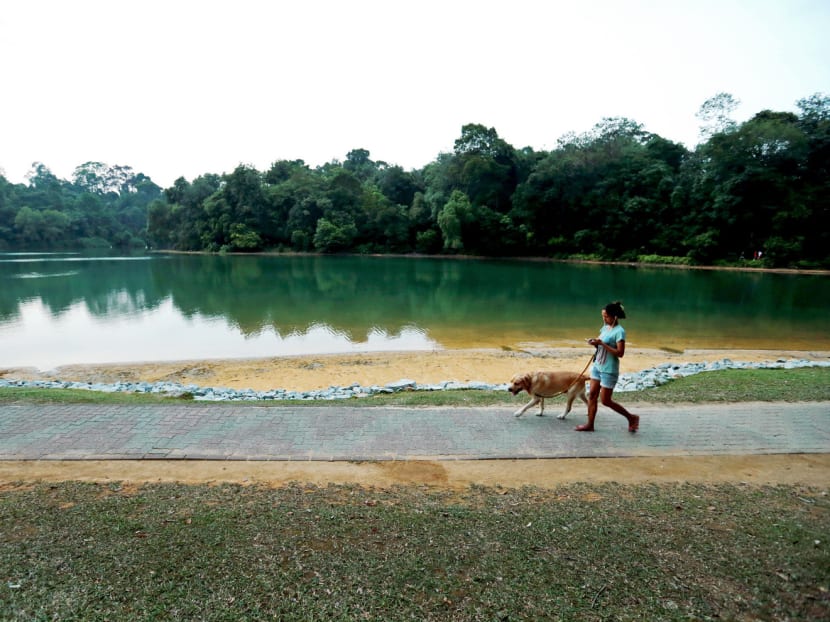Dry spell to continue into next month
SINGAPORE — For the second year running, January has seen significantly less rain than usual although the dry conditions that Singapore is experiencing now are not expected to be as bad last year, when more NEWater had to be pumped into reservoirs to keep water reserves at healthy levels.

A woman walking her dog at the at MacRitchie Reservoir. The dry spell last year prompted national water agency PUB to inject 30 million gallons of NEWater per day into the reservoirs to maintain healthy water levels. Photo: Mugilan Rajasegeran
SINGAPORE — For the second year running, January has seen significantly less rain than usual although the dry conditions that Singapore is experiencing now are not expected to be as bad last year, when more NEWater had to be pumped into reservoirs to keep water reserves at healthy levels.
Compared with the long-term average, total rainfall up to Wednesday was only about one-third of the long-term average of 242.4mm, said the National Environment Agency (NEA) in a press release yesterday.
By the end of this month, the total rainfall is expected to be 40 per cent to 60 per cent lower than usual, while below-average rainfall is also forecast for next month, it added, urging the community and industries to use water wisely.
“Singapore has been experiencing fewer rainy days since mid-January with the onset of the dry phase of the North-east Monsoon. With low rainfall forecast for the rest of the month, total rainfall for January is expected to be significantly below average,” the NEA said.
“However, the current assessment is that the dry phase of the North-east Monsoon season this year is not likely to be of the same degree of dryness as that experienced during the record dry spell of last year.”
Last year, there was just 72mm of rainfall in January — the lowest since 2010.
The dry spell, which spanned more than 20 days, prompted national water agency PUB to inject 30 million gallons of NEWater per day into the reservoirs to maintain healthy water levels.
Yesterday, the NEA said the North-east Monsoon typically comprises a wet phase from late November to January, followed by a dry phase in February.
The dry phase is characterised by drier and cooler weather and generally windy conditions, it added.
The onset of the dry phase was “slightly earlier than usual” this year, said the NEA, following wetter-than-normal November and December last year.
“A contributing factor is that of stronger winds in the surrounding region which have caused an earlier southward shift of the monsoon rain belt away from Singapore,” said the NEA.
Winds so far this month have also been the strongest since 2010.
It added that the remaining days this month are expected to be generally dry and windy, with mainly localised, brief showers on a few days.






